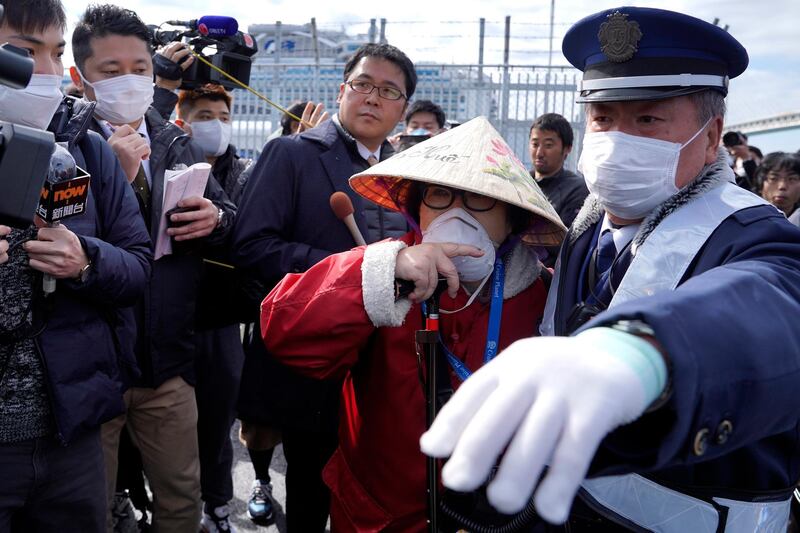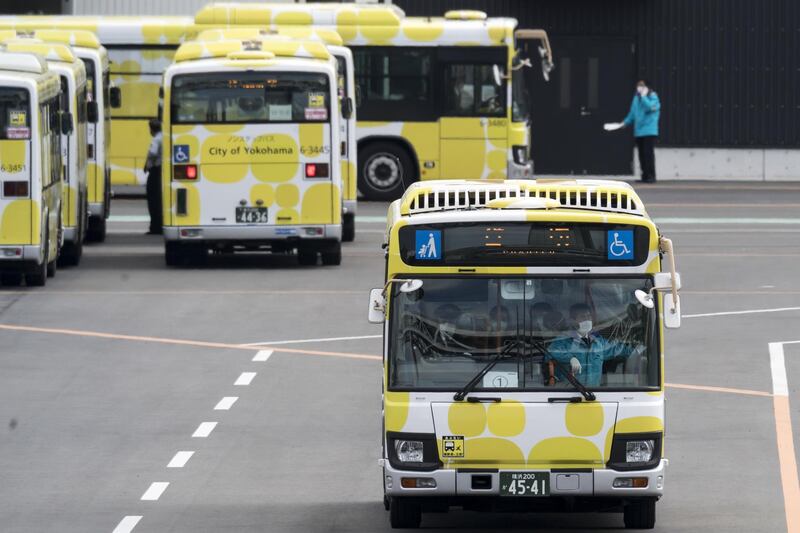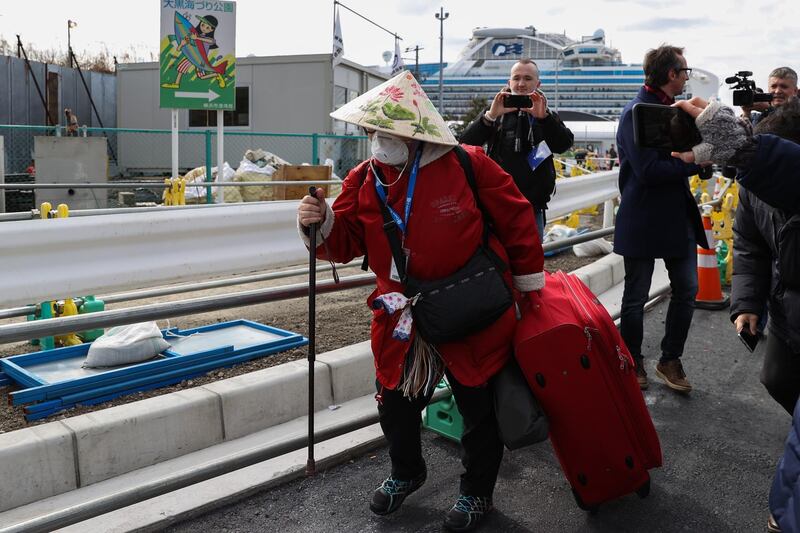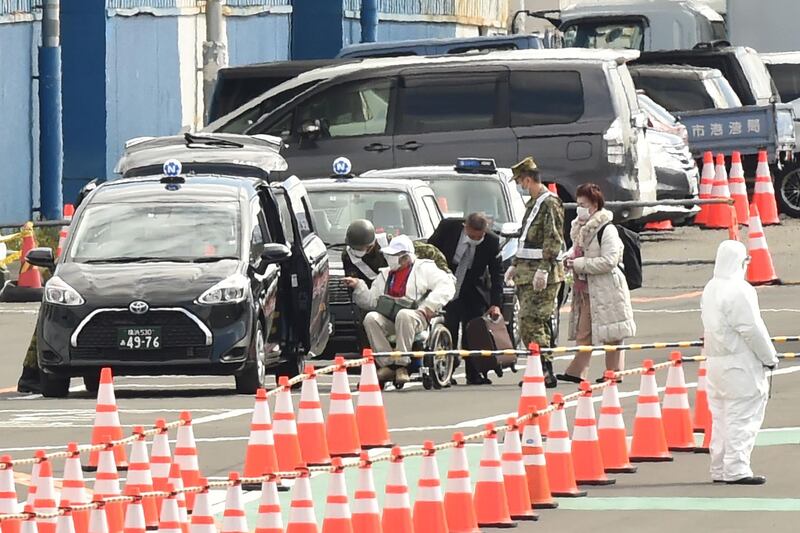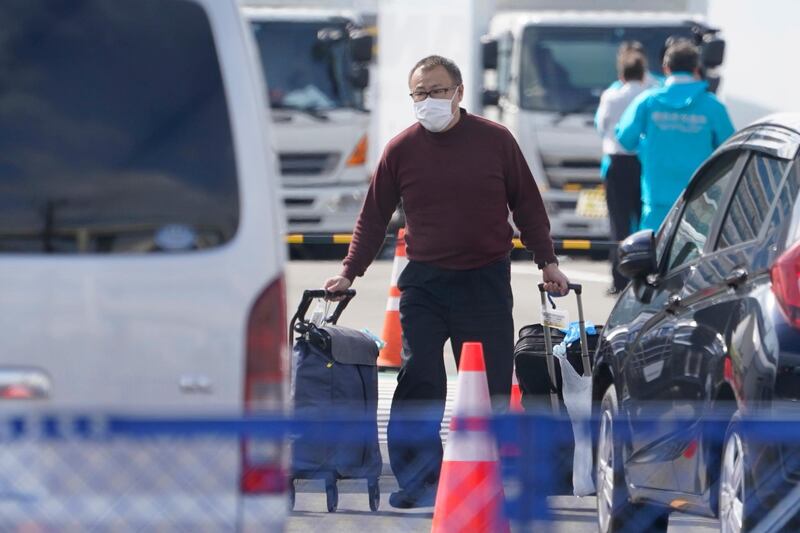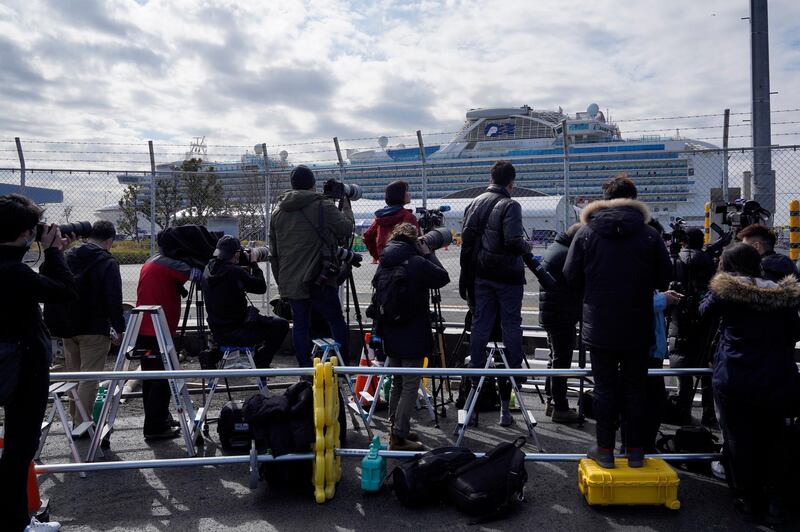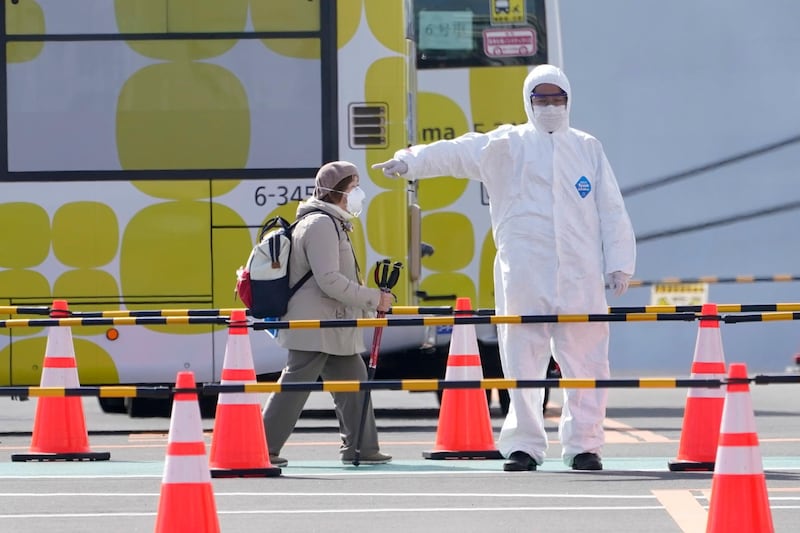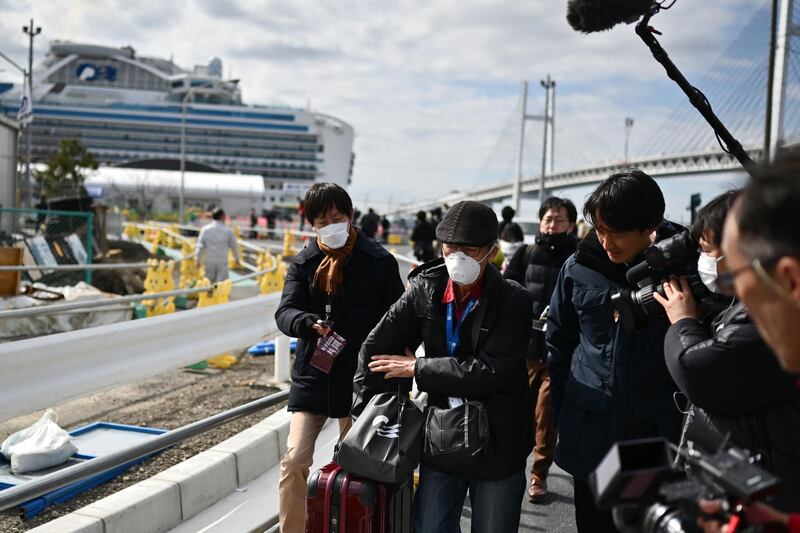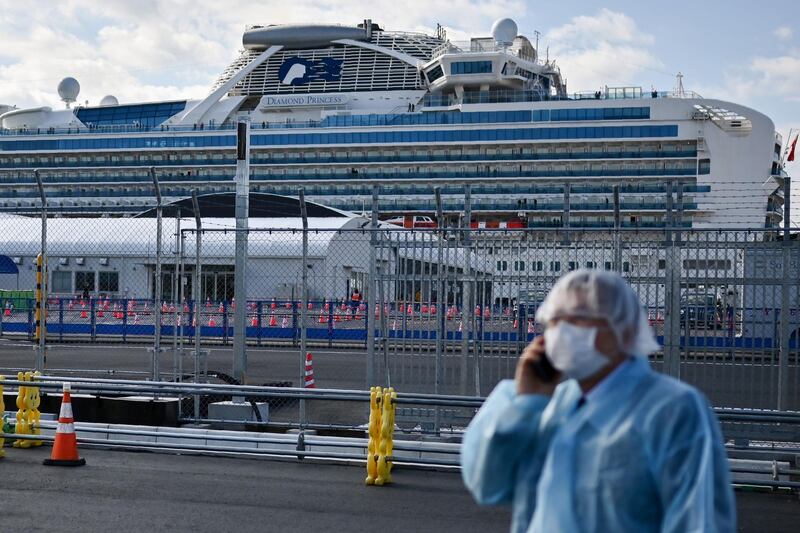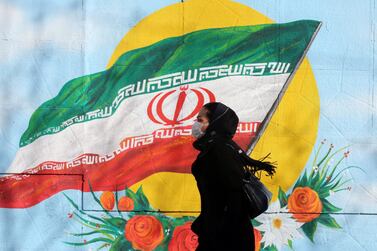Two elderly passengers from the quarantined cruise ship in Japan died from the coronavirus on Thursday.
The Diamond Princess passengers - a man and a woman in their 80s - both had existing medical conditions, NHK reported.
The cruise ship off Yokohama has the most infections anywhere outside China, with more than 600 confirmed cases. Following 14 days of quarantine, authorities on Wednesday allowed passengers to start disembarking from the Diamond Princess liner, despite worries the country has not done enough to prevent the spread of disease from the vessel.
Tokyo's growing crisis comes as China reported a big drop in new cases on Thursday, fuelling hopes the epidemic is nearing its peak.
The death toll rose to 2,118 in mainland China as 114 more people died, but health officials reported the lowest number of new cases there in nearly a month, including in the hardest-hit province, Hubei.
More than 74,000 people have been infected in China and hundreds more in some 25 countries, with Iran reporting two deaths, the first fatalities in the Middle East.
South Korea has reported its first death from the new coronavirus according to the country's Yonhap news agency.
The Iranian health ministry has announced the creation of a "coronavirus headquarters" five people tested positive for the coronavirus on Thursday. Two people tested positive for the virus in Qom and one in Arak. This is following the death of two Iranian's in the country from the virus on Wednesday.
More and more reports coming from various Iranian cities, including Tehran, of suspected #COVID19 patients being quarantined. People are all alarmed by the deaths of the two men in Qom. Fear and worry is all I'm seeing here
— Reza Khaasteh (@Khaaasteh) February 20, 2020
A World Health Organisation official noted the progress in China but warned it had not reached a turning point just yet.
Chinese officials said this week that their drastic containment efforts, including quarantining tens of millions of people in Hubei and restricting movements in other cities nationwide, has started to pay off.
"After arduous efforts, the situation is changing for the better," Foreign Minister Wang Yi said at a meeting with South East Asian counterparts in Laos on Wednesday, according to the official Xinhua news agency.
Wuhan - where the virus is believed to have emerged in December - is still "severely affected" by the epidemic, Mr Wang said.
"But the situation is under effective control, while other regions are embracing comforting news," he said.
More than 600 new infections were reported in Wuhan, the lowest daily tally since late January, and well down from the 1,749 new cases the day before.
The national figure has now fallen for three days in a row.
Chinese authorities placed Wuhan, a city of 11 million people, under quarantine on January 23 and quickly locked down the rest of Hubei in the days that followed.
Cities far from Wuhan have limited the number of people who can leave their houses for groceries, while villages have sealed themselves off from outsiders.
Meanwhile, the neigbouring province of Hebei has set up a special financing project worth $7.12 billion with China Development Bank to help get the regional economy up and running again after coronavirus disruptions.
Richard Brennan, regional emergency director at the WHO, said China was making "tremendous progress in a short period of time" but cautioned that it was not over just yet.
"Trends are very encouraging but we are not at a turning point yet," Mr Brennan said in Cairo.
'Chaotic' cruise quarantine
While China touts progress in its fight against the Covid-19 epidemic, Japan's government faces criticism over quarantine measures on the Diamond Princess cruise ship.
The huge vessel moored in Yokohama is easily the biggest coronavirus cluster outside the Chinese epicentre, with 621 positive cases confirmed among the passengers and crew - one sixth of the total.
On Wednesday, 443 passengers disembarked from the ship after testing negative for the Covid-19 virus and not showing symptoms during a 14-day quarantine period. The complete removal of the passengers was expected to last at least three days.
More passengers left the ship on Thursday, packing into yellow buses and leaving for stations and airports.
But questions are increasingly being asked as to the wisdom of allowing former Diamond Princess passengers to roam freely around Japan's crowded cities, even if they have tested negative.
The death of the two elderly passengers is likely to add to the criticism.
A specialist in infectious diseases at Kobe University slammed "completely chaotic" quarantine procedures onboard, in rare criticism from a Japanese official.
"The cruise ship was completely inadequate in terms of infection control," said Kentaro Iwata in videos he has since deleted.
Japan's health ministry insisted it had conducted "consultations on appropriate infection control in the ship" with experts and taken a range of measures.
Coronavirus outside of mainland China
In Hong Kong, authorities have exteded the work-from-home arrangement for civil servants through to March 1 due to the Covid-19 coronavirus.
Former Hong Kong Chief Secretary Anson Chan has said Chief Executive Carrie Lam's response to protests and Covid-19 coronavirus "has been lacklustre", adding that the city "remains polarized."
Meanwhile, the mayor of the South Korean city of Daegu has urged the city's 2.5 million people to refrain from going outside as coronavirus cases have begun to spike in the city.
Mayor Kwon Young-jin made the request in a televised news conference after the southeastern city and its nearby towns reported 35 additional cases of infection with the new coronavirus on Thursday
South Korea's military has also banned soldiers from leaving bases or meeting visitors as a precaution against spreading Covid-19 coronavirus in Daegu, South Korea.
Reports from Iran are indicating that the head of Iranian health ministry's infectious diseases department denies reports of Qom city "being quarantined" due to Covid-19 coronavirus.
New coronavirus spreads more like flu than Sars
Meanwhile, scientists in China who studied nose and throat swabs from 18 patients infected with the new coronavirus say it behaves much more like influenza than other closely related viruses, suggesting it may spread even more easily than previously believed.
In at least in one case, the virus was present even though the patient had no symptoms, confirming concerns that asymptomatic patients could also spread the disease.
Although preliminary, the findings published on Wednesday in the New England Journal of Medicine, offer new evidence that this novel coronavirus, which has killed more than 2,000 people mostly in China, is not like its closely-related coronavirus cousins.
“If confirmed, this is very important,” said Dr Gregory Poland, a virologist and vaccine researcher with the Mayo Clinic in Rochester, Minnesota, who was not involved with the study.
Unlike Severe Acute Respiratory Syndrome (SARS), which causes infections deep in the lower respiratory tract that can result in pneumonia, Covid-19 appears to inhabit both the upper and lower respiratory tracts. That would make it not only capable of causing severe pneumonia, but of spreading easily like flu or the common cold.
Researchers in Guangdong province monitored the amount of coronavirus in the 18 patients. One of them, who had moderate levels of the virus in their nose and throat, never had any disease symptoms.
Among the 17 symptomatic patients, the team found levels of the virus increased soon after symptoms first appeared, with higher amounts of virus present in the nose than in the throats, a pattern more similar to influenza than SARS.
The level of virus in the asymptomatic patient was similar to what was present in patients with symptoms, such as fever.
“What this says is clearly this virus can be shed out of the upper respiratory tract and that people are shedding it asymptomatically,” Poland said.
